Best Shade Annuals: 16 Flowers and Foliage Plants For Shade
Do you have a shady spot in your garden where no plants want to grow? These are the best shade annuals to brighten up the space with their colorful flowers and foliage.
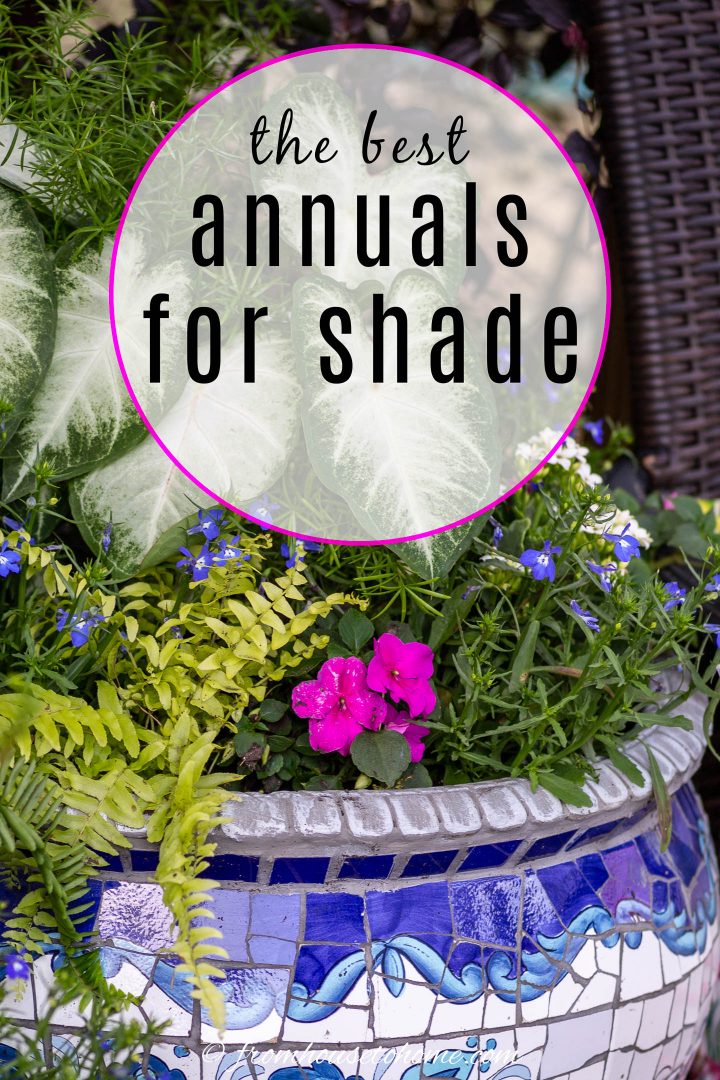
Whether your entire garden is shaded from your house’s shadow or there is one section that never sees the light of day, it doesn’t mean this area of your yard has to be bare.
There are many flowers and colorful leaves that would happily take up residence in a shady area. Some even prefer it!
And annuals are a great option because while they only last for one season, they bloom all summer long (unlike most perennials which only have flowers for a few days to weeks).
Whether you want to plant them under trees or need them for containers in the shade, this list of annuals for shade will give life to your garden in areas you thought were beyond hope.
What kind of annuals grow best in the shade?
This post may contain affiliate links. We make a small commission if you buy the products from these links (at no extra cost to you). As an Amazon Associate, I earn from qualifying purchases. But we only recommend products we would use ourselves. For more information, click here to see our disclosures.
When shopping for shade annuals:
- Pay close attention to the plant tag. It will inform you how much sun the plant will need to survive. Look for full shade if your garden gets less than 4 hours of sunlight per day.
- Buy the biggest annuals you can find. Since they’re only around for one season, you don’t want to be waiting until the end of the summer for the plants to make an impact.
- Buying a variety of heights, shapes, and sizes to keep your garden or containers bright and interesting.
- Don’t forget to include foliage-only plants as well as flowers.
Now that you know what to look for, let’s break down some of the best annuals for shade.
Annual flowers for shade
Whether you want to brighten up your shade garden with containers or add colorful plants to your garden beds, these annual flowers for shade will bloom all summer long.
1 | Calendula
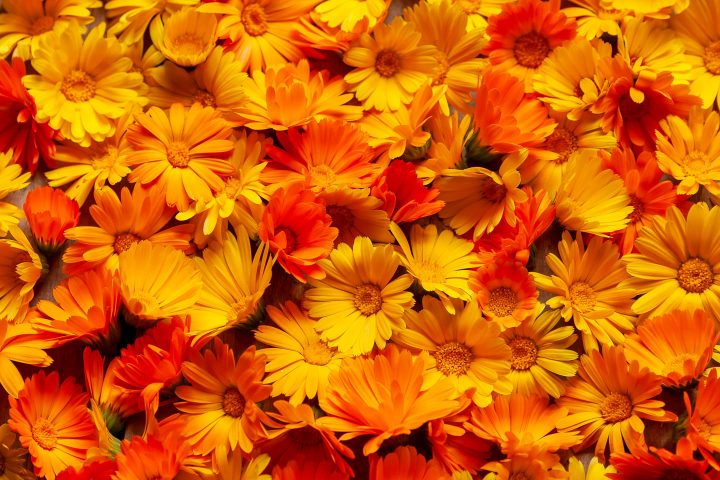
Calendula officinalis is one of the most colorful shade annuals with its bright, beautiful golden flowers.
There are quite a few benefits to growing these beauties in your yard.
Add calendula to your vegetable garden as a companion plant. It will attract pollinators and repel any pests you want to keep away from your prized veggies.
It also works well as a cut flower and the dried flowers are a must for all herbalists in their herbal remedy collection.
Calendula tolerates most soils but will need to be deadheaded often to get more blooms.
2 | Wishbone flower
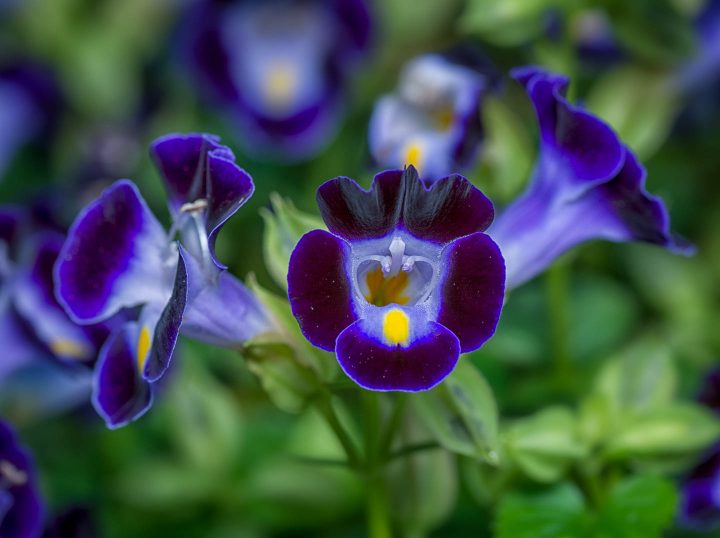
Torenia fournieri are snapdragon-like flowers that grow 6″ to 12″ tall and come in blue, pink, red, or white.
They are a trailing flower that works wonderfully in containers in part or full shade. They can get quite compact and bushy too.
Why should you love wishbone flowers?
Well hummingbirds love them and we love hummingbirds! (You can find more plants to attract hummingbirds HERE).
Better yet, they are deer resistant and require no deadheading.
3 | Fuchsia
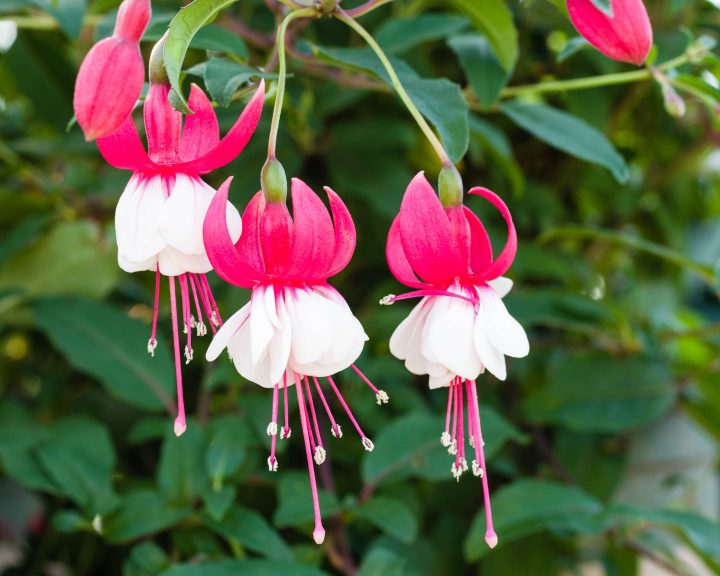
A very fun and bright plant, Fuchsia x hybrid is one of the best shade flowers and comes in red, pink, white and lavender blooms. They look beautiful in hanging baskets!
The flowers themselves are multicolored and do not require deadheading in order for blossoms to continue throughout the summer.
They are actually tender perennials, and can survive over the winter in zones 10 and 11.
4 | Trailing Lobelia
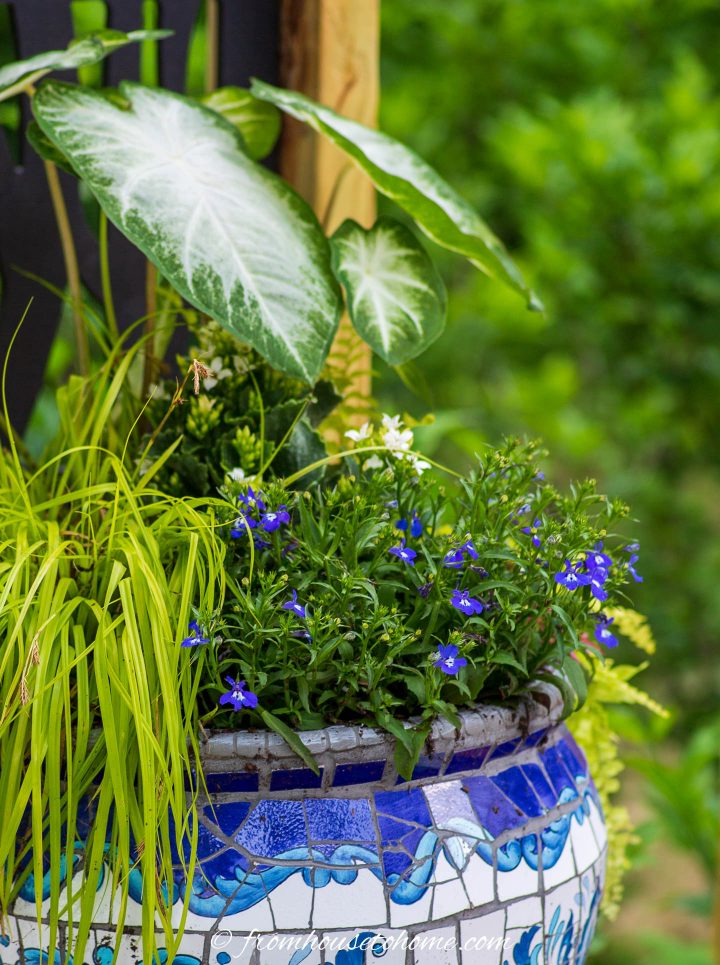
Lobelia erinus is a low growing plant with tons of tiny, trailing flowers.
Most of the literature says that it should be grown in full sun or partial shade.
But in my zone 8 summer garden, I’ve actually had the best luck with it in the shade. (The further north you live, the more sun it needs).
You can find lobelia in white, blue, and lavender, all with textured foliage.
They don’t need deadheading but may benefit from a shearing if they get a little straggly. Which makes them a fairly low maintenance plant.
And as a little bonus, they are also deer resistant!
Lobelia prefers cooler summer temperatures and tends to peter out in the midst of our summer heat. But it’s so pretty I can’t help planting it anyway!
5 | Browallia
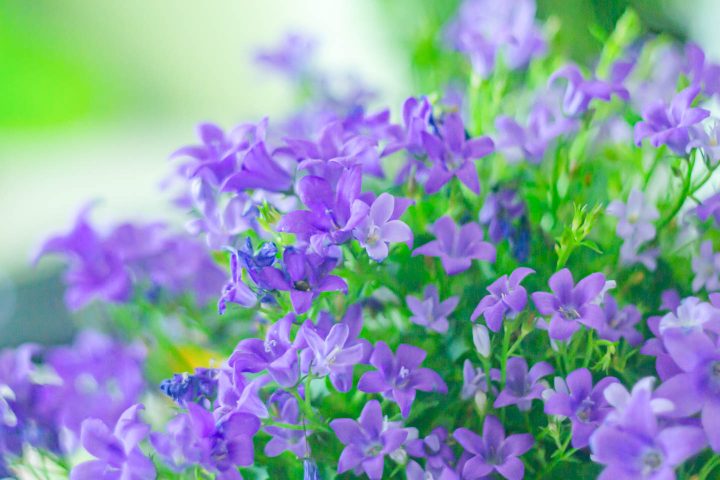
Browallia (also known as bush violet) is one of my most favorite shade annuals. It has beautiful purple, white or blue flowers that form a small bush-like mound between 12″ and 24″ tall depending on the variety.
The “Endless Illumination” variety from Proven Winners doesn’t require dead heading or a lot of fertilizer in order to be covered in blooms from spring to fall. Which makes it a really low-maintenance option for your shade garden.
This plant is actually a tender perennial that will overwinter in zones 9 to 11.
You can find some more blue annuals for shade and part shade HERE.
6 | Impatiens
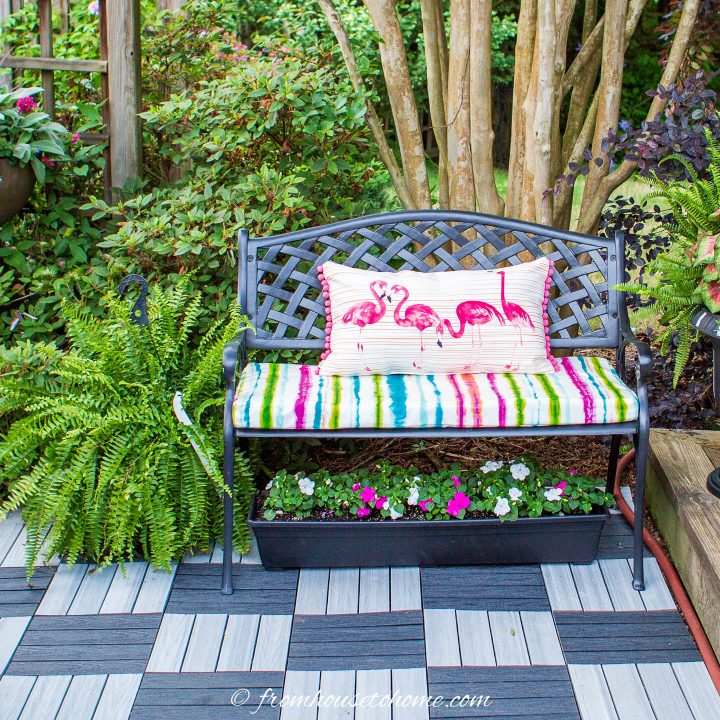
Impatiens are a popular choice for full shade areas and are very easy to source in garden centers.
And there’s a good reason why. Impatiens walleriana is easy to grow, doesn’t require deadheading, and produces flowers for shade reliably all summer. Even under a bench under a tree!
Water regularly, but don’t get them too wet. If they wilt too much (which can happen from both under-watering and over-watering), they will lose their leaves.
Impatiens come in many colors and varieties, meaning you can find the ideal option for your garden’s aesthetic.
Since they don’t like frost, plant in late spring.
Note: Since Impatiens have been troubled with downy mildew disease in recent years, many nurseries are not carrying them so they can be harder to find than they used to be.
7 | Dragon Wing Begonia
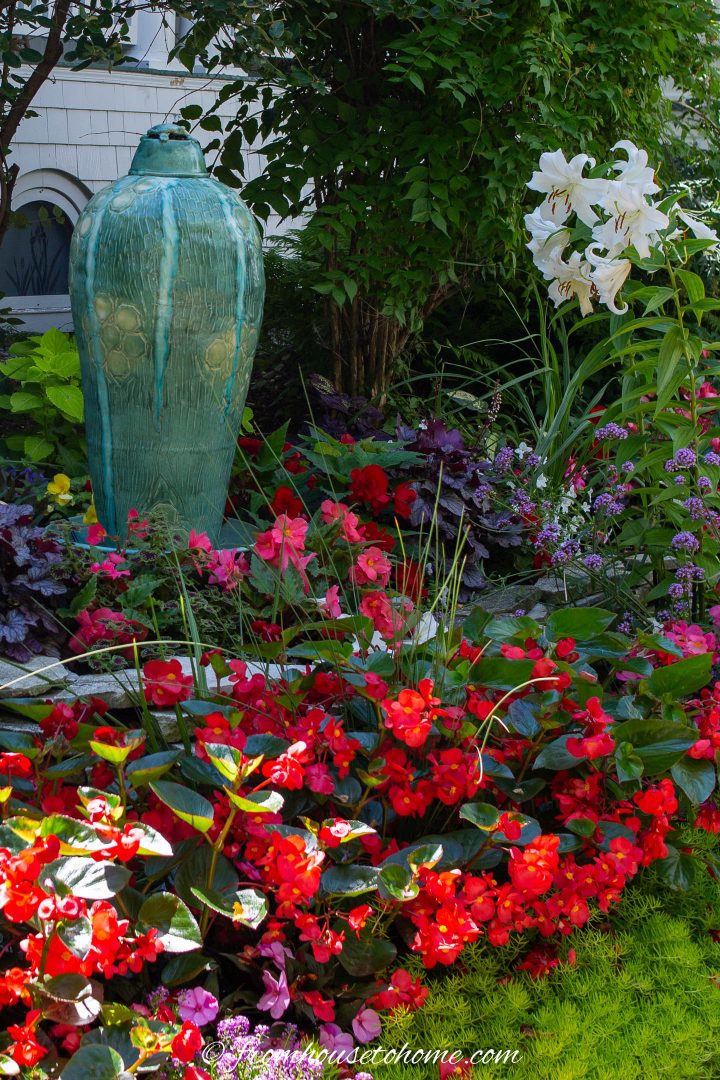
As an alternative to impatiens, try the Dragon Wing Begonia which has red or pink flowers and thrives in garden beds, hanging baskets and shade containers.
It grows 14″ to 18″ tall in shade to part shade areas, doesn’t require deadheading and is covered in blooms all summer long.
With consistent watering, it’s a low maintenance plant that will easily fill in any empty spots in your shade garden.
8 | Tuberous Begonia
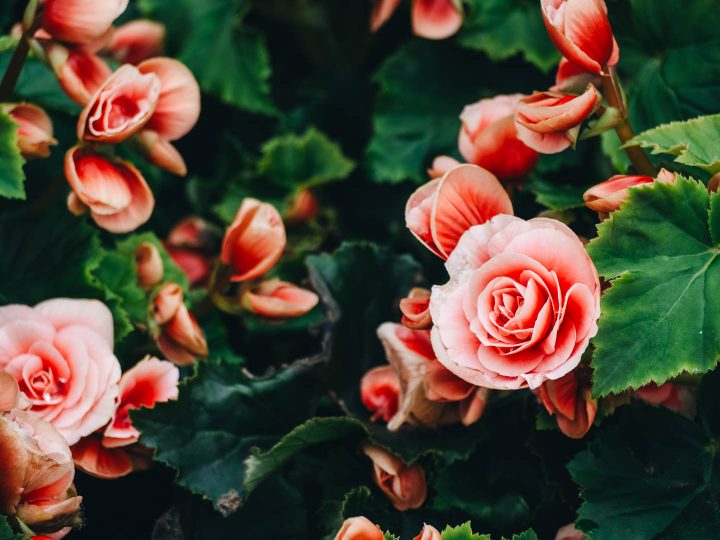
Begonia tuberhybrida has beautiful roselike shade flowers that even thrive in full shade.
You can find these large flowers in upright or cascading varieties.
They come in pink, yellow, orange, red, and white flowers with gold, purple, green, or burgundy leaves. So there’s lots of options!
It is frost tender, so only plant it when you’re absolutely positive there will be no more sneaky overnight frosts.
To keep this plant flowering and vibrant, deadhead (remove) spent blooms.
What About Colorful Foliage Plants For Shade?
Flowers don’t get to have all the fun!
Throw in a little bit of variation by growing plants with colorful foliage in the shade.
9 | Rex Begonia
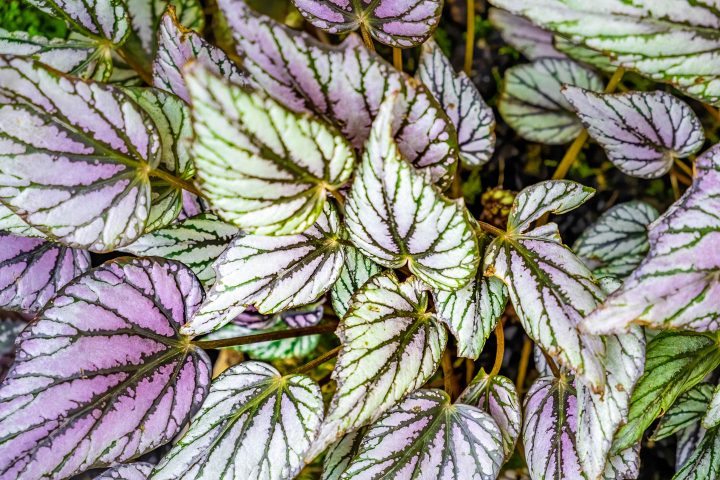
Not all begonias are reveled for their flowers.
The Begonia rex-cultorum has dramatic, large leaves that enjoy the shade.
On the leaves you’ll find patterns of swirls, spots, stripes, or splatters in green, silver, burgundy, and pink.
While they do have small flowers, you will want to plant rex begonia for their showy leaves.
For healthy rex begonia, do not overcrowd when planting. Poor circulation between the plants can result in fungal disease. Also avoid overwatering.
10 | Caladium
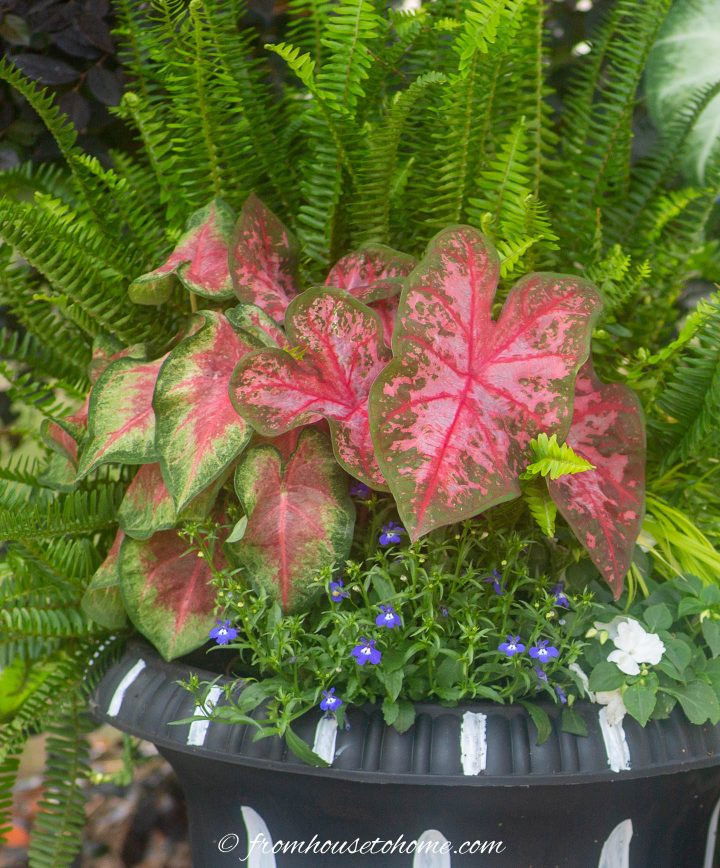
Caladium bicolor are heart-shaped, papery leaves that do well in full shade (though strap-leaf cultivars do well in full sun).
The colorful leaves come in white, pink, red and green and contrast well with other shade plants such as ferns, impatiens and lobelia.
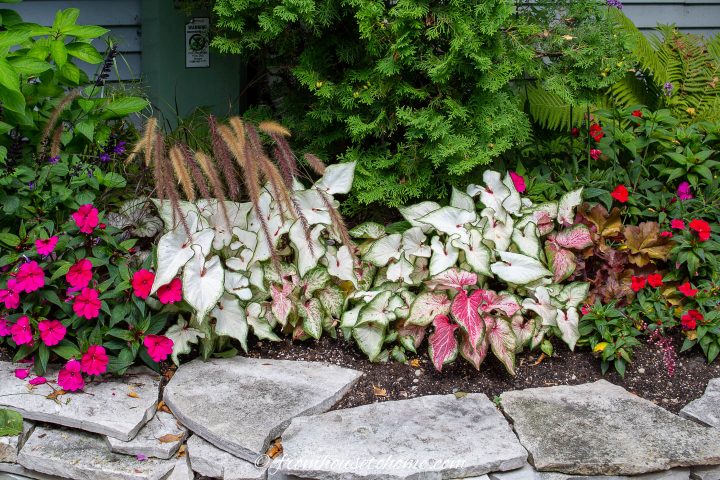
Shade loving Caladiums don’t mind hot and humid weather, so they work well for places with hot summers.
Careful to not overwater and remove any leaves as the color fades.
11 | Coleus
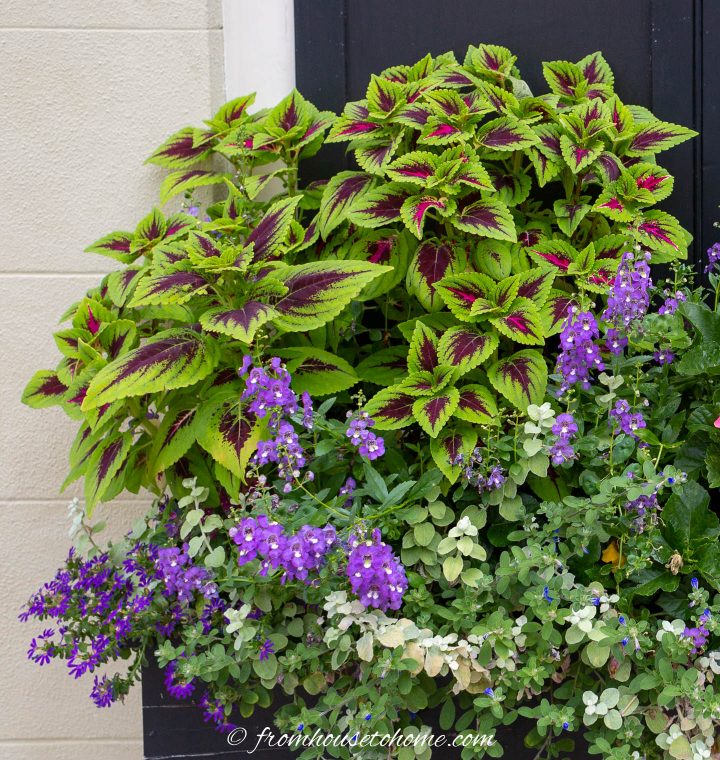
The coleus plant is a long-time favorite annual due to its bright colors and requiring very little care.
Coleus scutellarioides come in numerous color and texture combinations, but be sure to check the labels since some grow in full sun.
Their green, yellow, pink, red, and maroon leaves can add color to dark places.
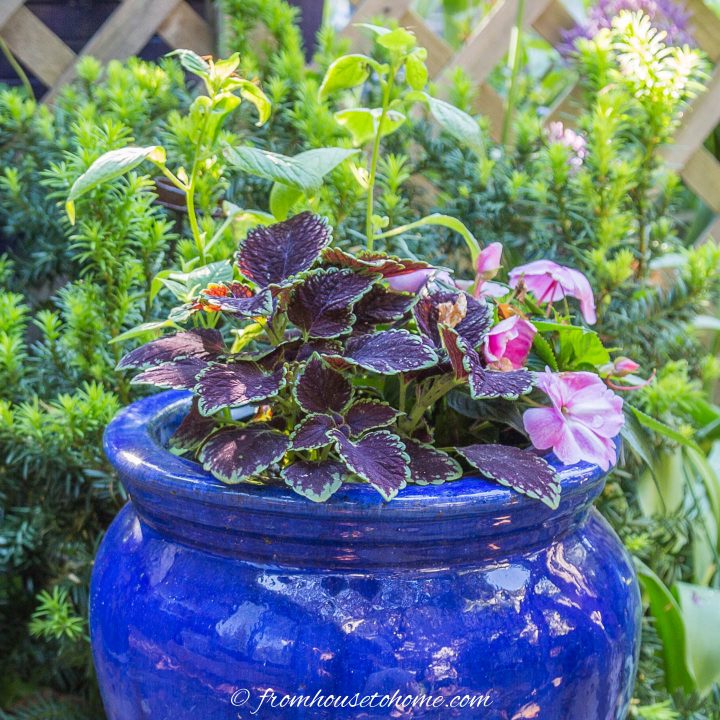
When the season is coming to a close, take a few snippings and propagate them inside. They take well to water and will be big and ready for the garden next season.
12 | Creeping Jenny
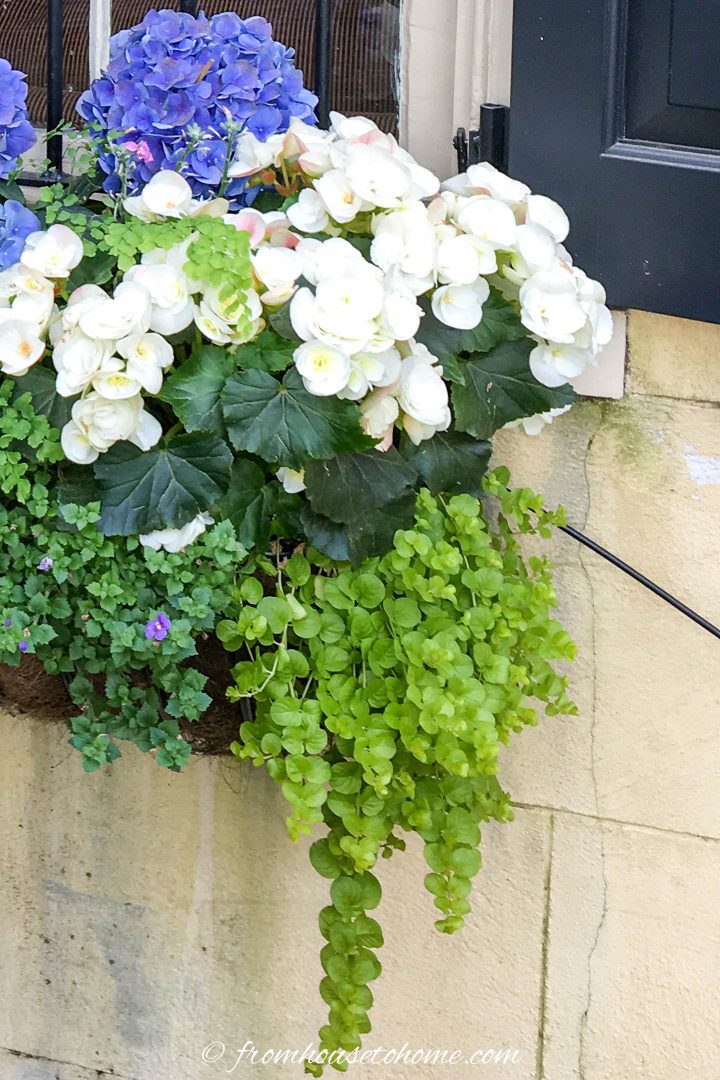
A carpet of green vine, Lysimachia nummularia, is a bright lime green trailing plant that brightens and fills any space.
Their small leaves are in an oval shape and quickly fill up containers or hanging baskets.
One thing to note, creeping jenny can be quite invasive. So I like to plant it in containers. If you’re going to put it in the ground, make sure you check your area’s list of invasive species before planting.
13 | Sweet Potato Vine
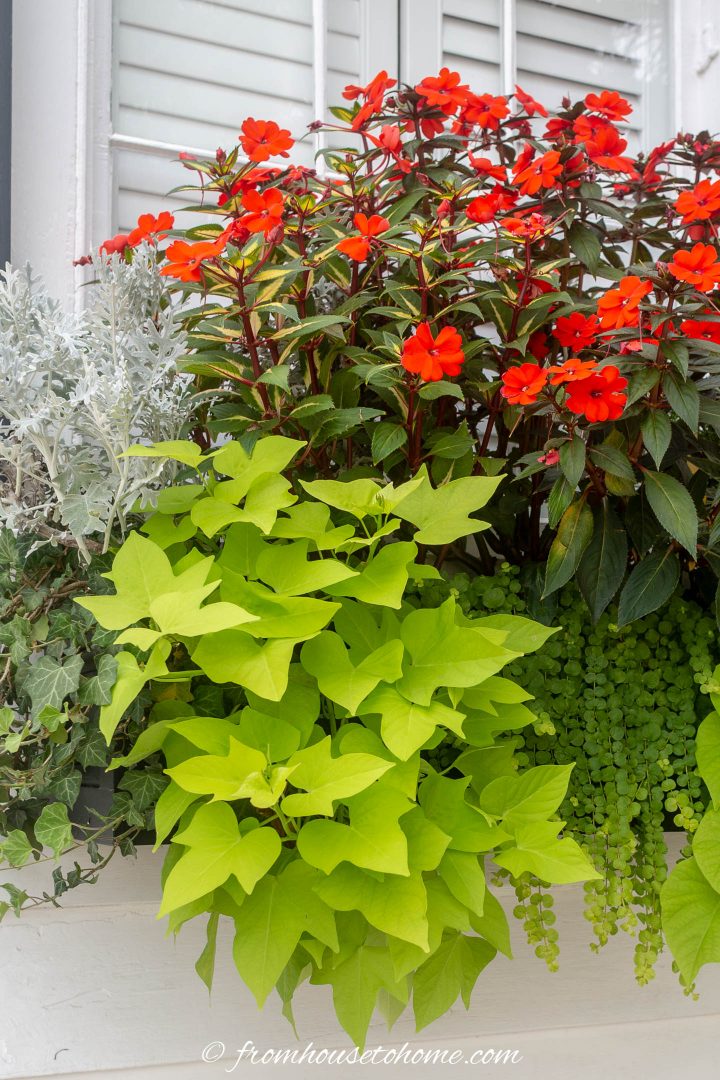
No, not the vegetable!
Ipomoea batatas is from the same species as the sweet potato you would find on your dinner plant, but this ornamental annual is bred specifically for its leaves.
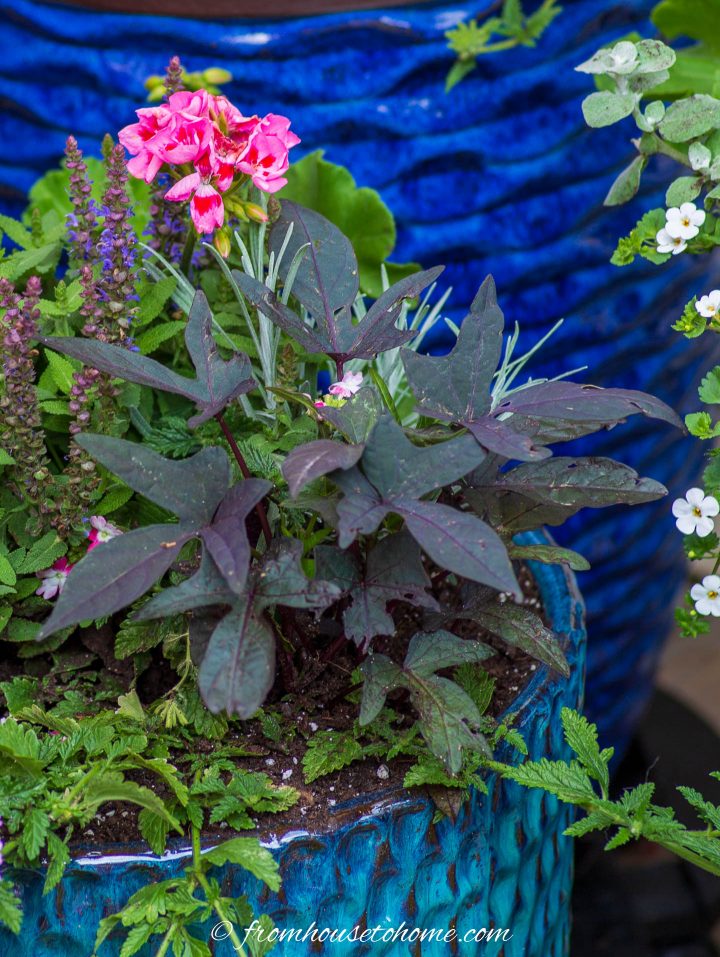
Most often found in red and lime green, there are also bronze and black options available.
The heart-shaped leaves add a bold color to baskets and containers.
14 | Polka Dot Plant
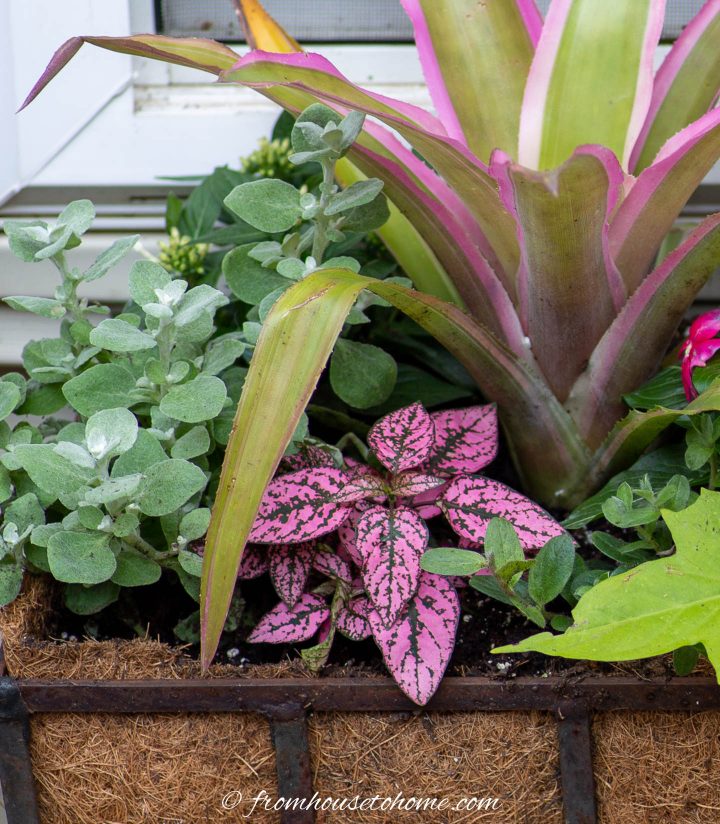
If you are looking for some fun leaves, the Hypoestes phyllostachya is your plant!
The spotted leaves come in pink and white, with the most common color combination being pink leaves with green spots.
The Polka dot plant stays fairly small and works well in containers.
You can bring them indoors for the winter and enjoy as a houseplant or propagate them to plant outside again the following season.
In fact, many garden centers target the polka dot plant solely as a houseplant, but it can also be treated as a shade annual.
15 | Bromeliads
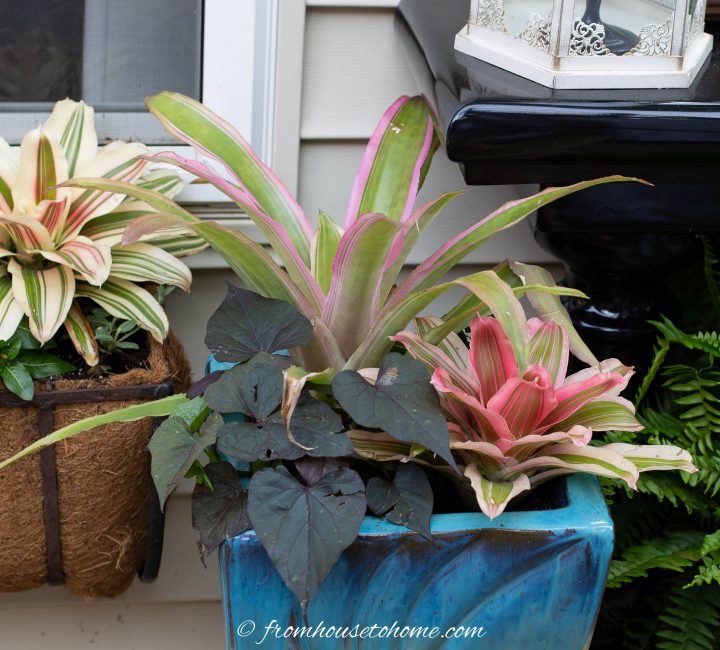
Like the polka dot plant, many people think of bromeliads as indoor plants. But they also look beautiful outdoors in the shade garden.
While most do have stunning flowers, I plant them for their beautiful leaves (they do not always bloom reliably).
They are very low maintenance plants. Just make sure you don’t over water them as the roots can root.
16 | Ferns
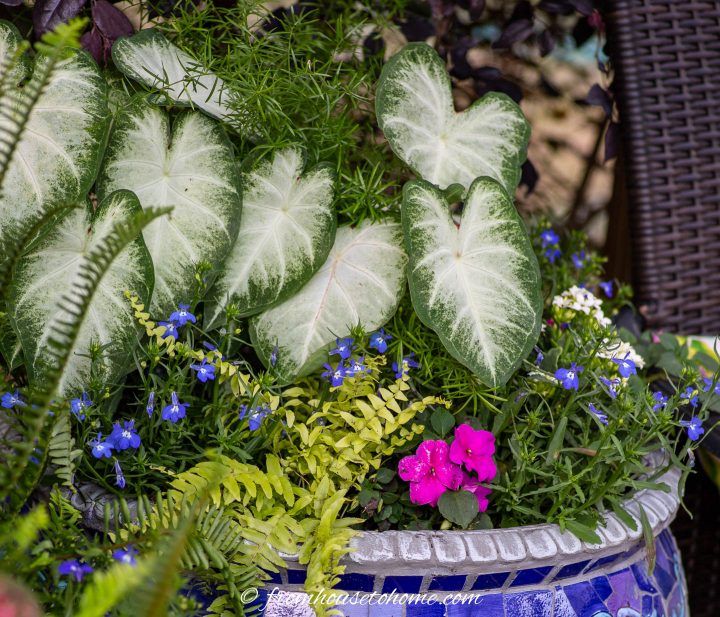
Because they are low maintenance and have beautiful, lacy foliage, ferns are a given for shade gardens.
And the annual varieties (which are really tender perennials) also work well.
I love to use asparagus fern (that’s the one with the pointy leaves in the container above) because the shape of its leaves contrasts with other shade plants.
Boston fern is another of my favorite shade annuals. It’s the one that you see hanging from porches all over the south. The golden variety has lime green fronds that look beautiful in the shade. (It’s the one in the front of the container above).
Final Thoughts on Shade Annuals
And there you have it! This list of shade annuals should have your garden looking amazing in every corner. By avoiding full-sun flowers and planting ones that enjoy the shade, you will have a successful and beautiful garden all summer long.
Other gardening ideas you might like
- Blue and purple annuals for containers in the shade
- How to create window boxes inspired by Charleston, SC
- Step-by-step tutorial for planting containers
Did I miss one of your best shade annual? Tell us about it in the section below.
This post was originally published on April 17, 2021 but was updated with new content on September 15, 2022.
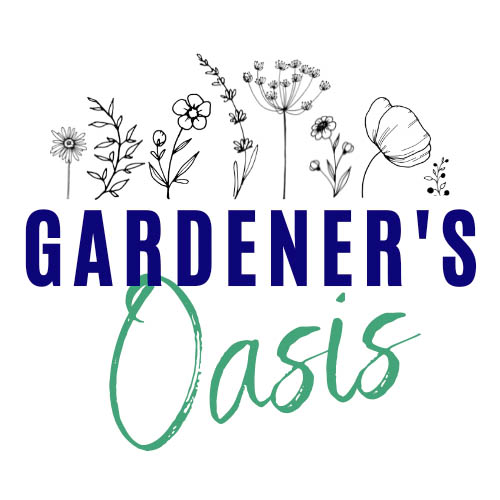
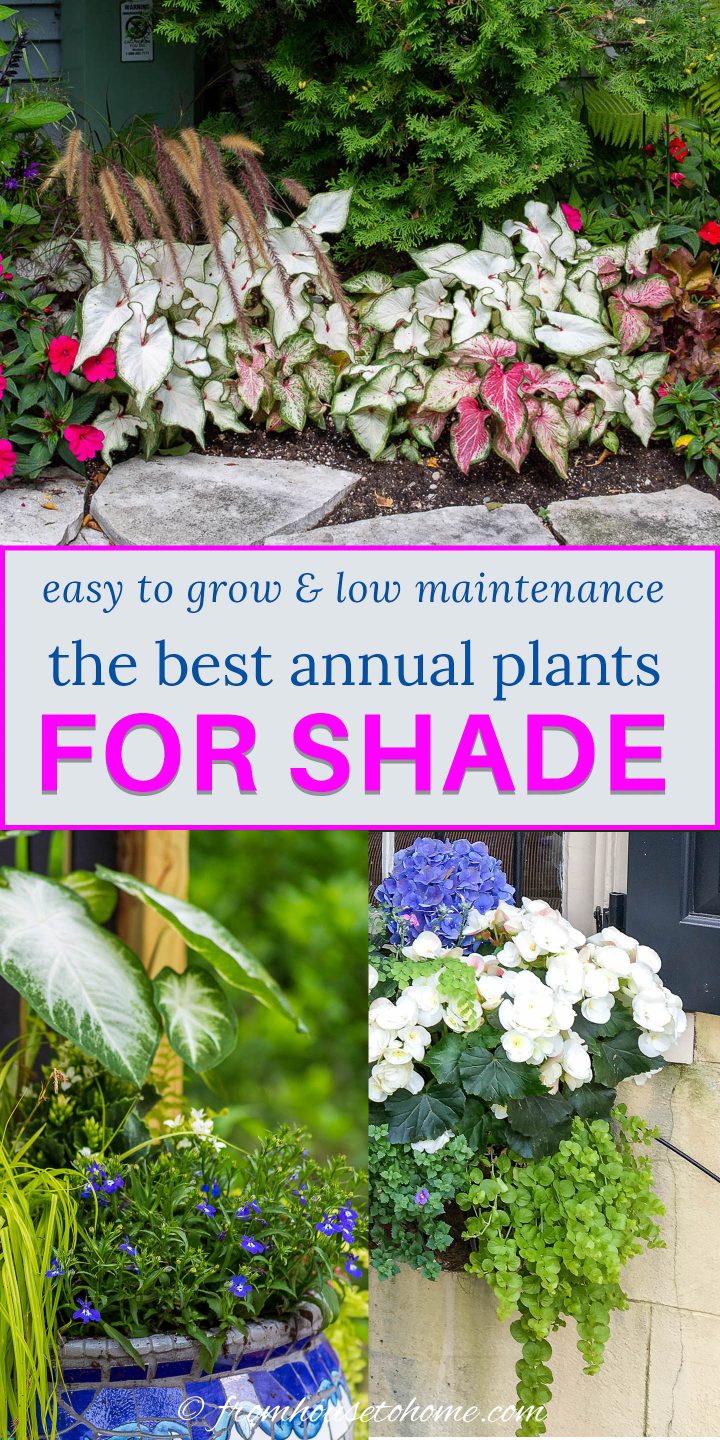
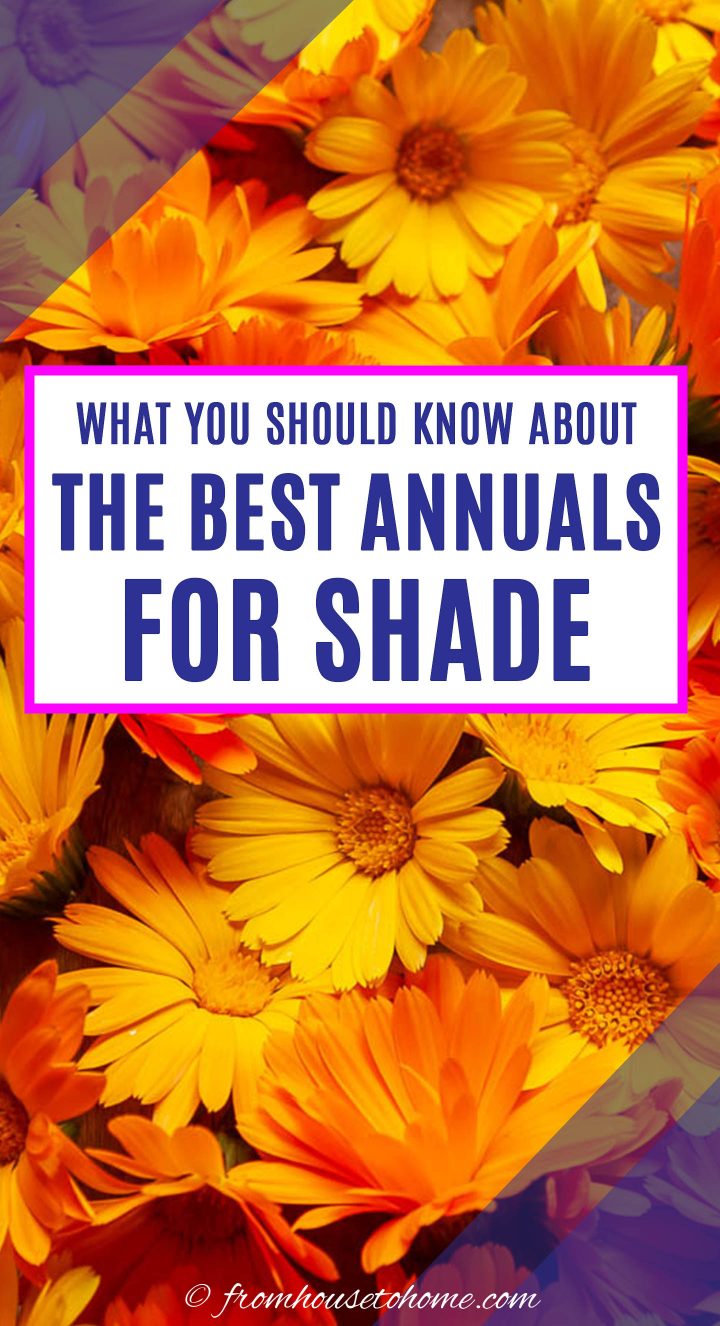
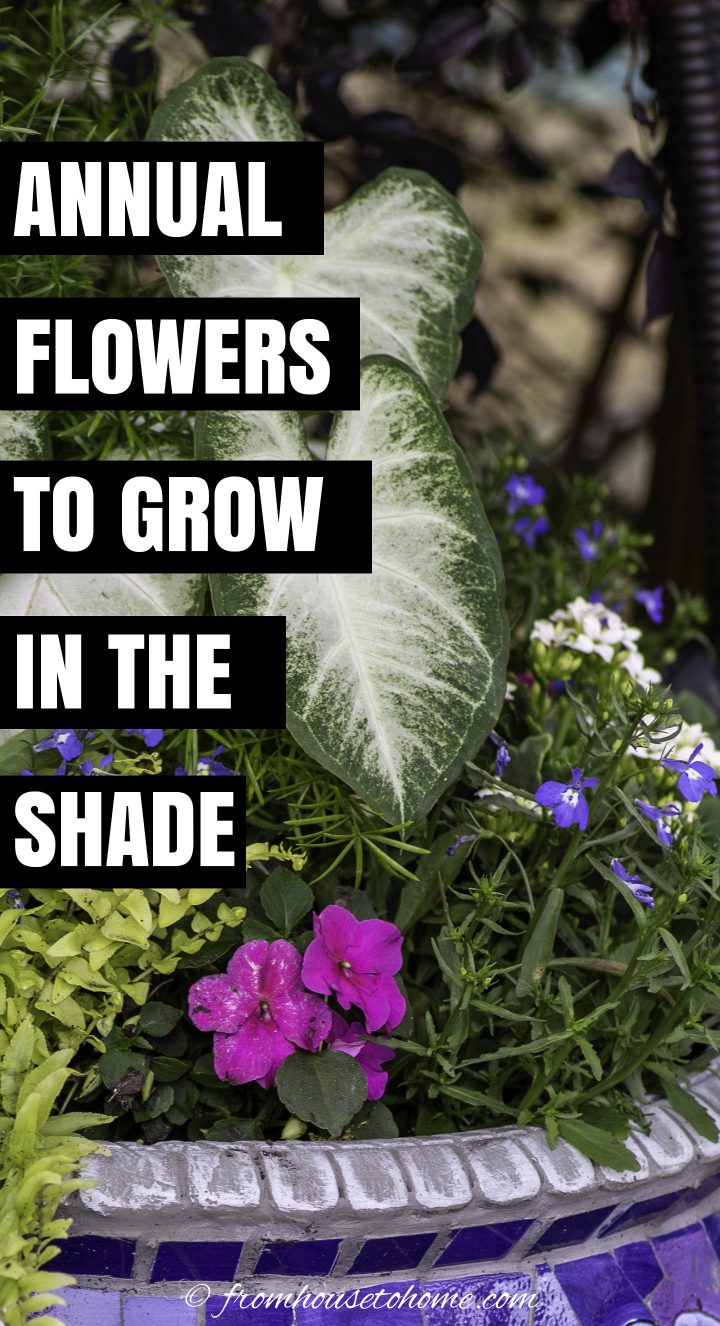
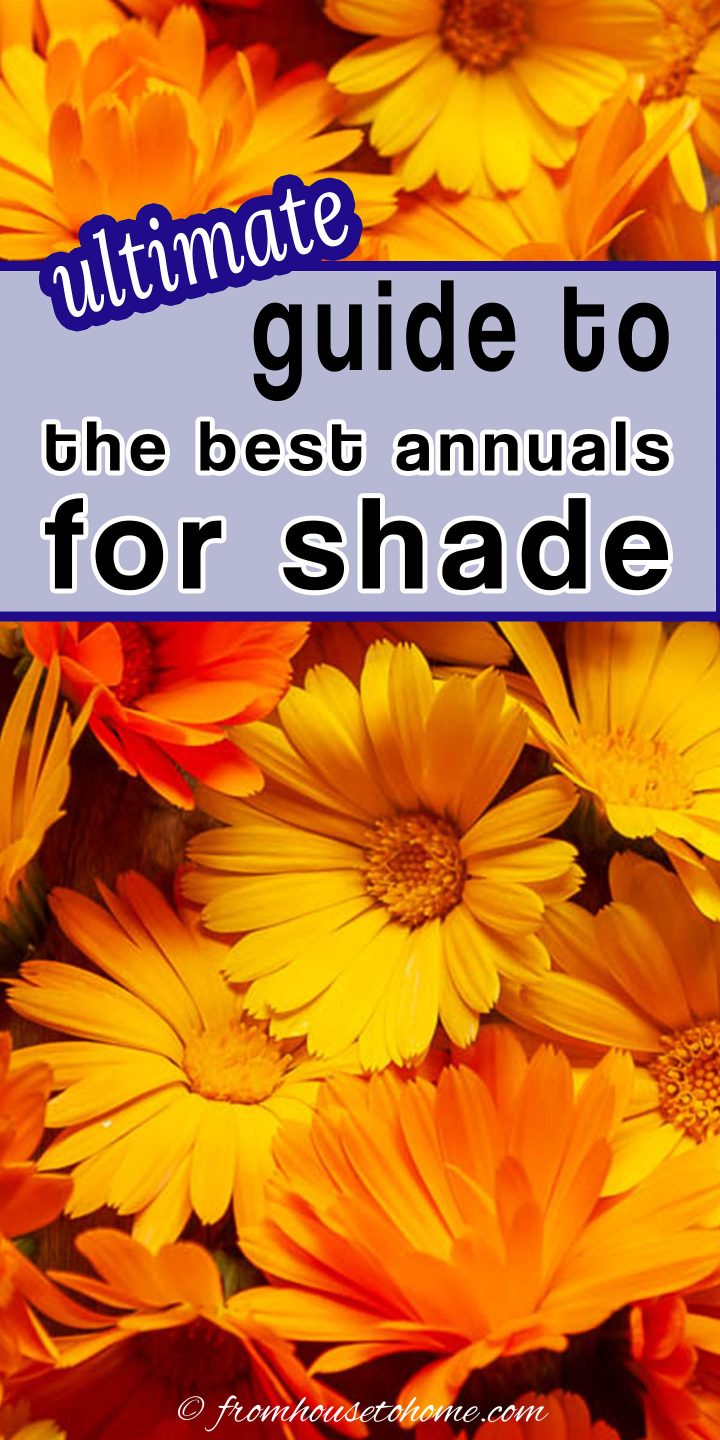
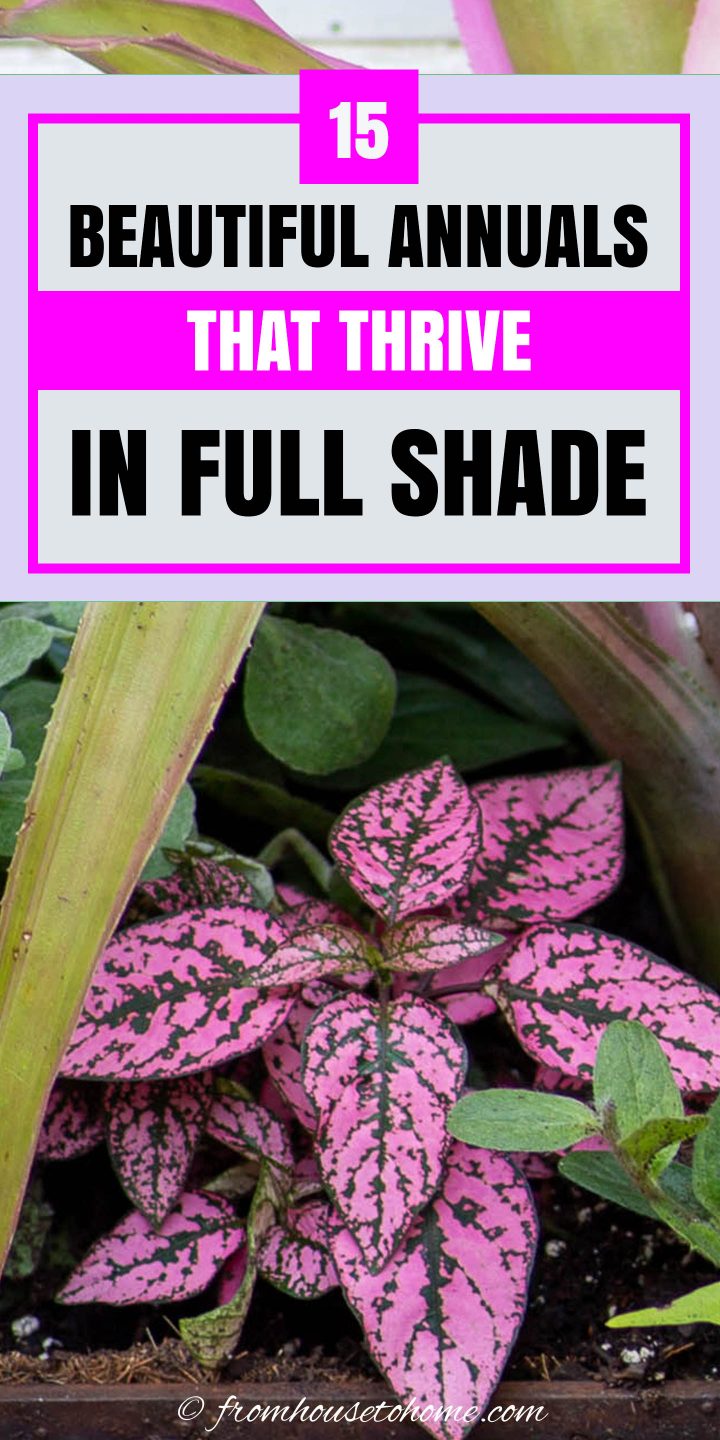
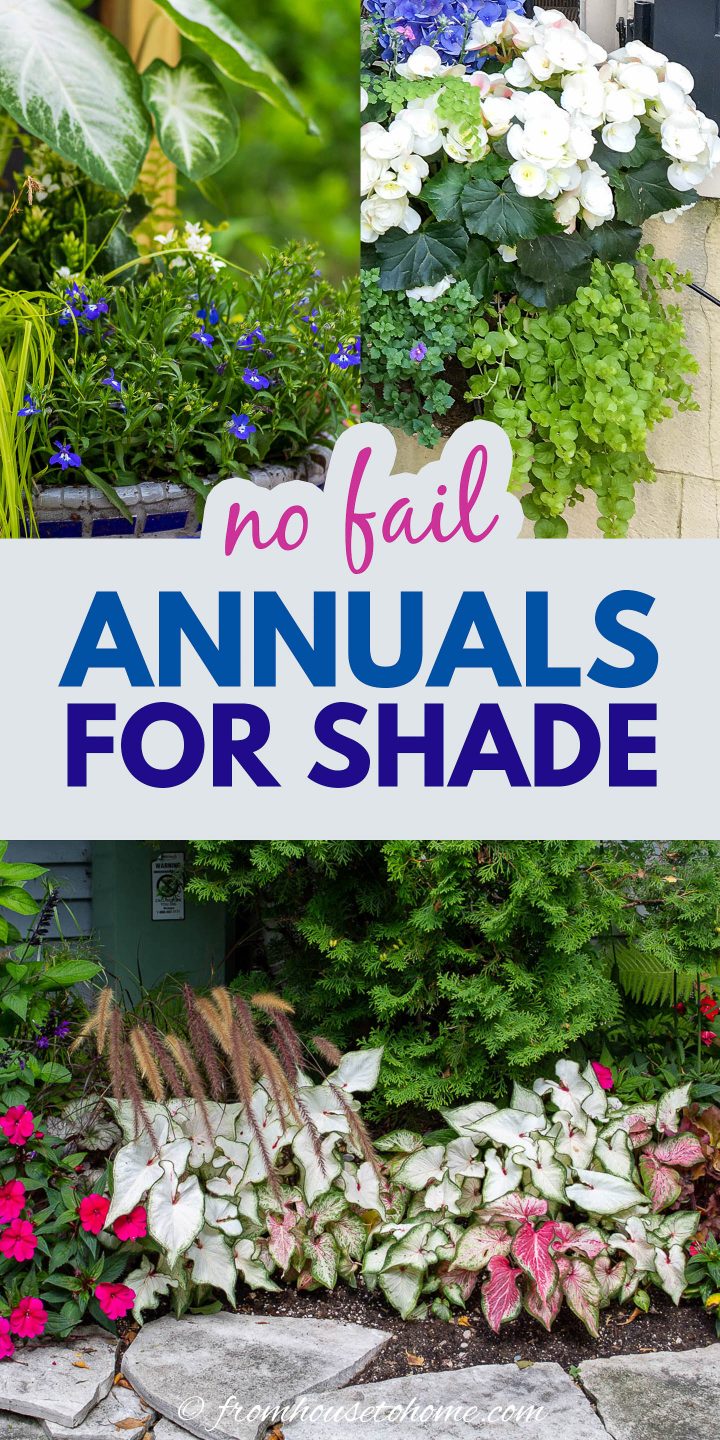
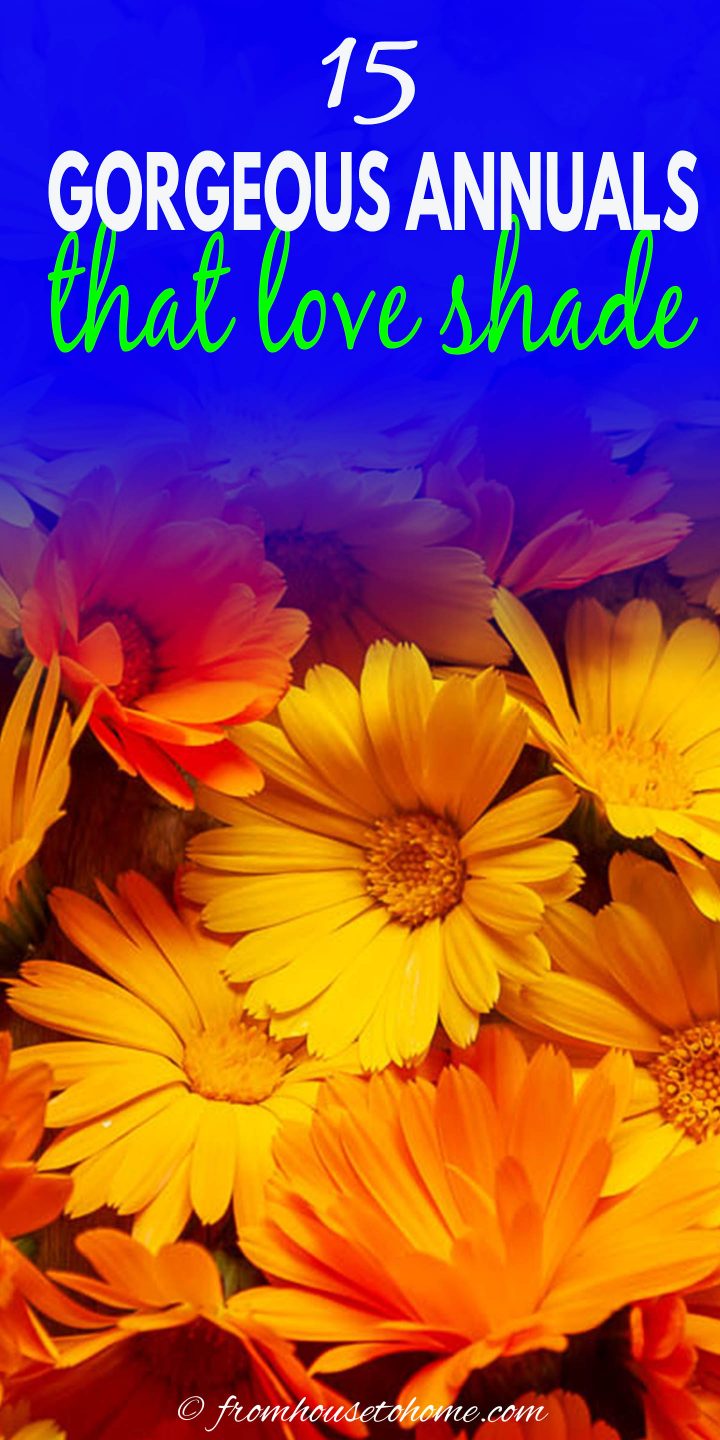
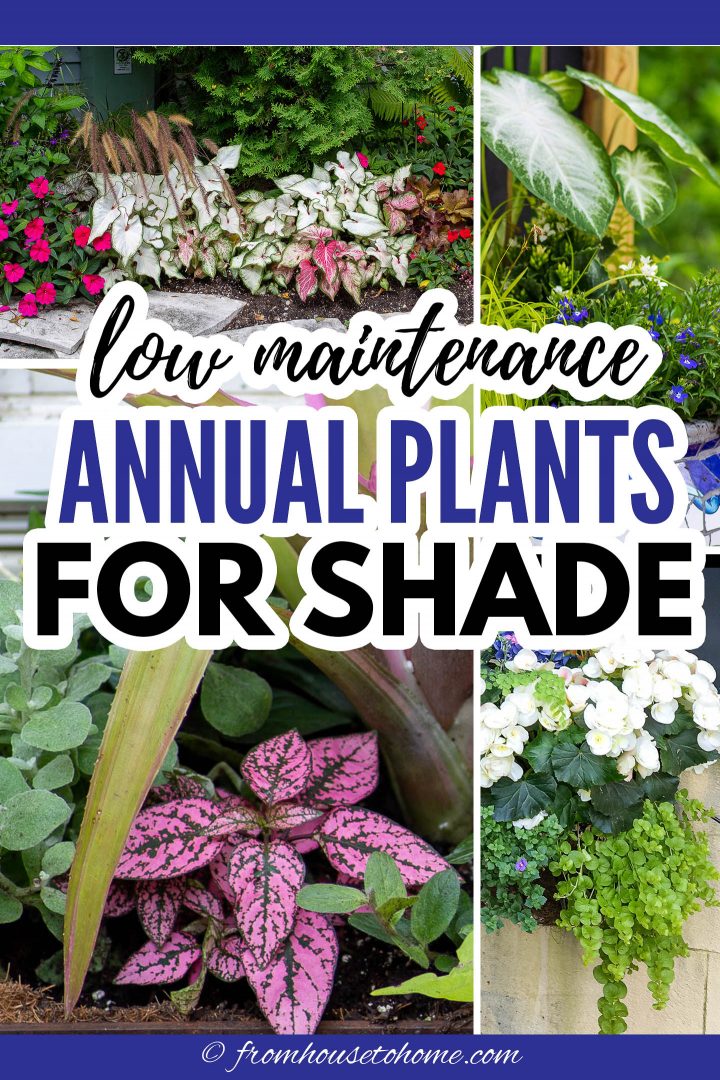
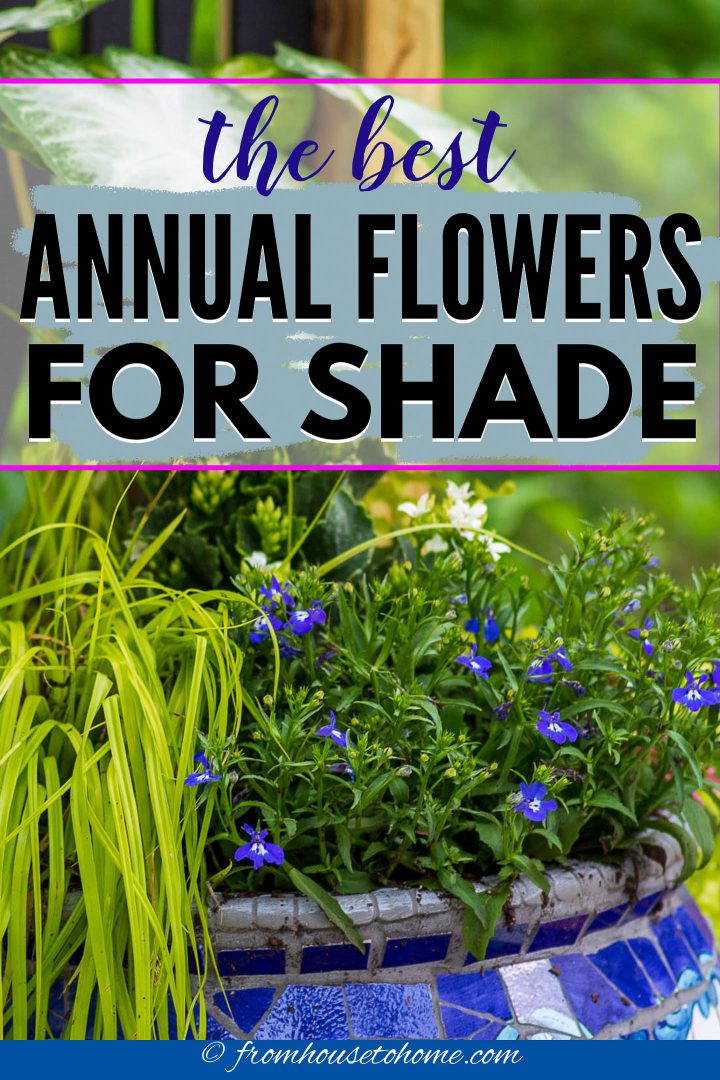
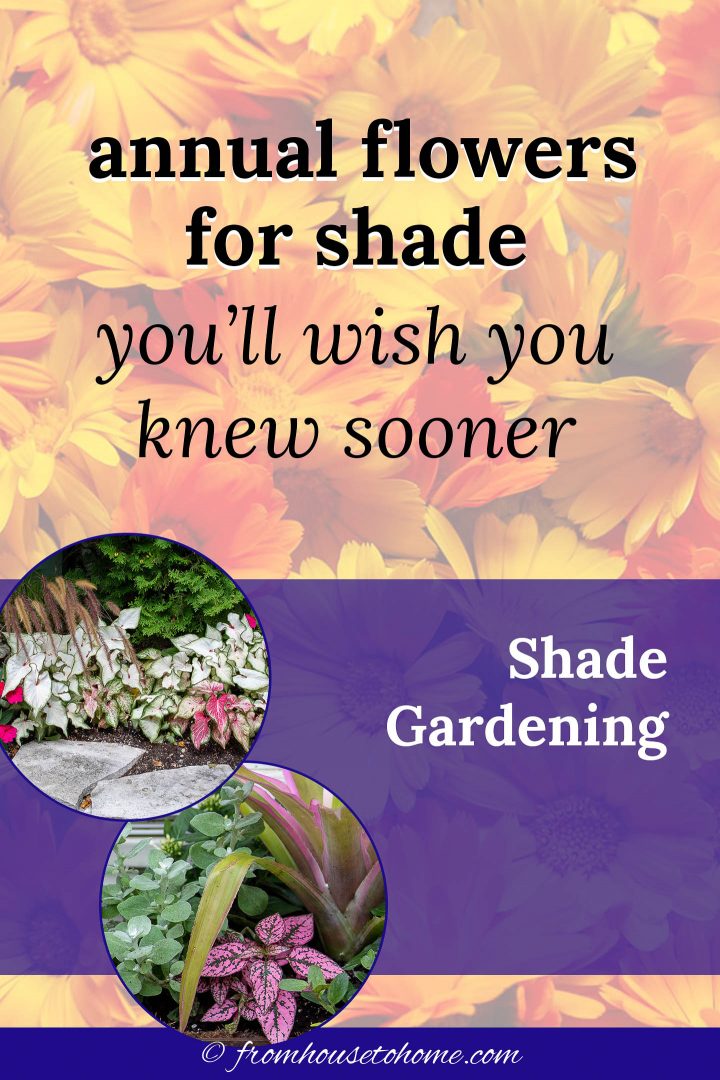
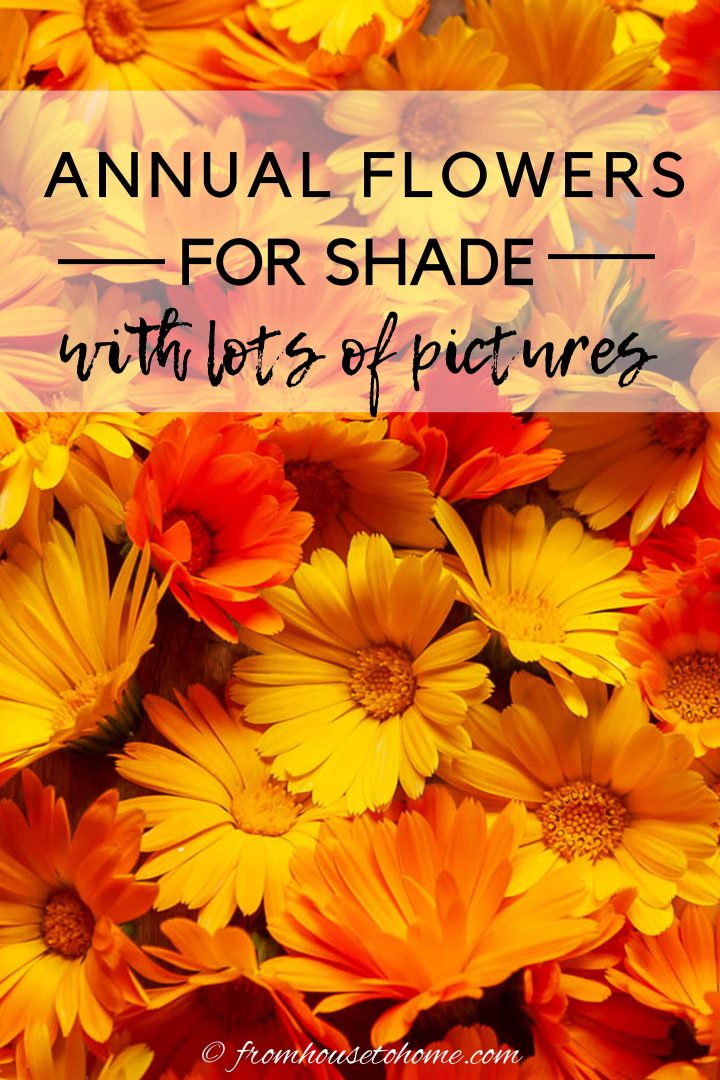
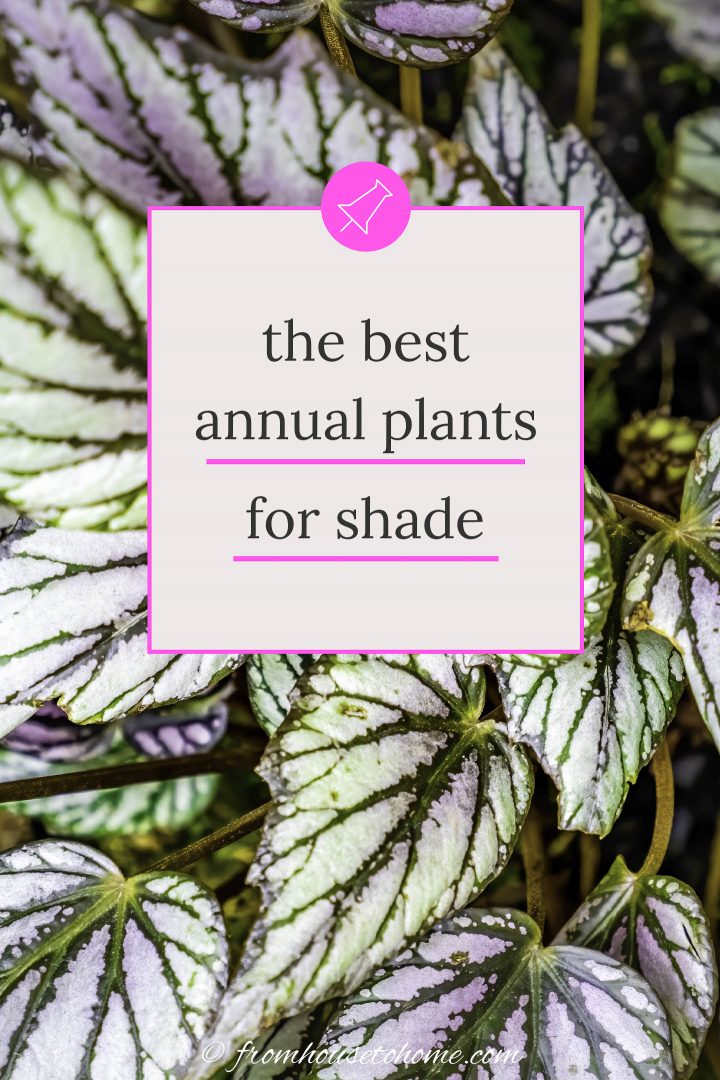
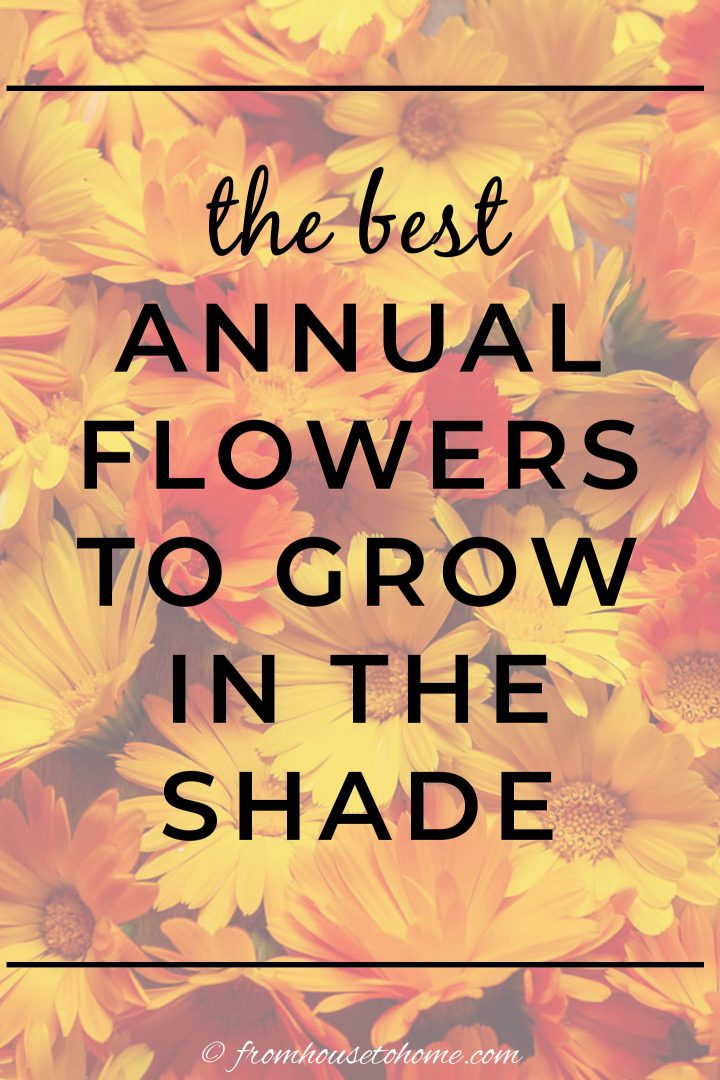
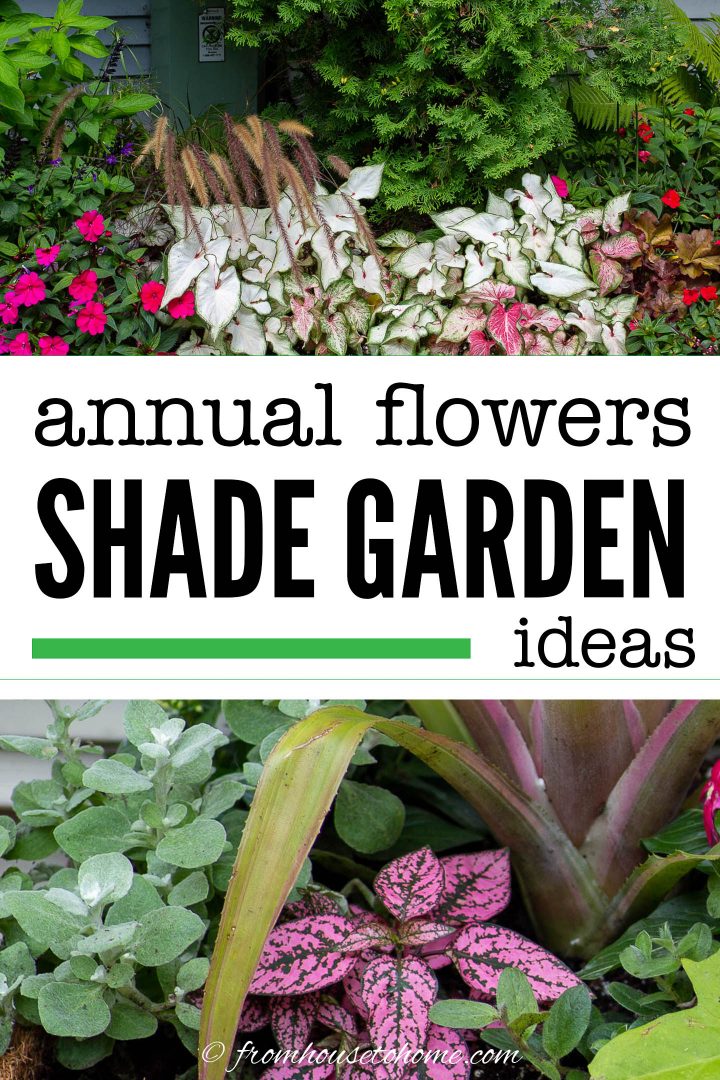
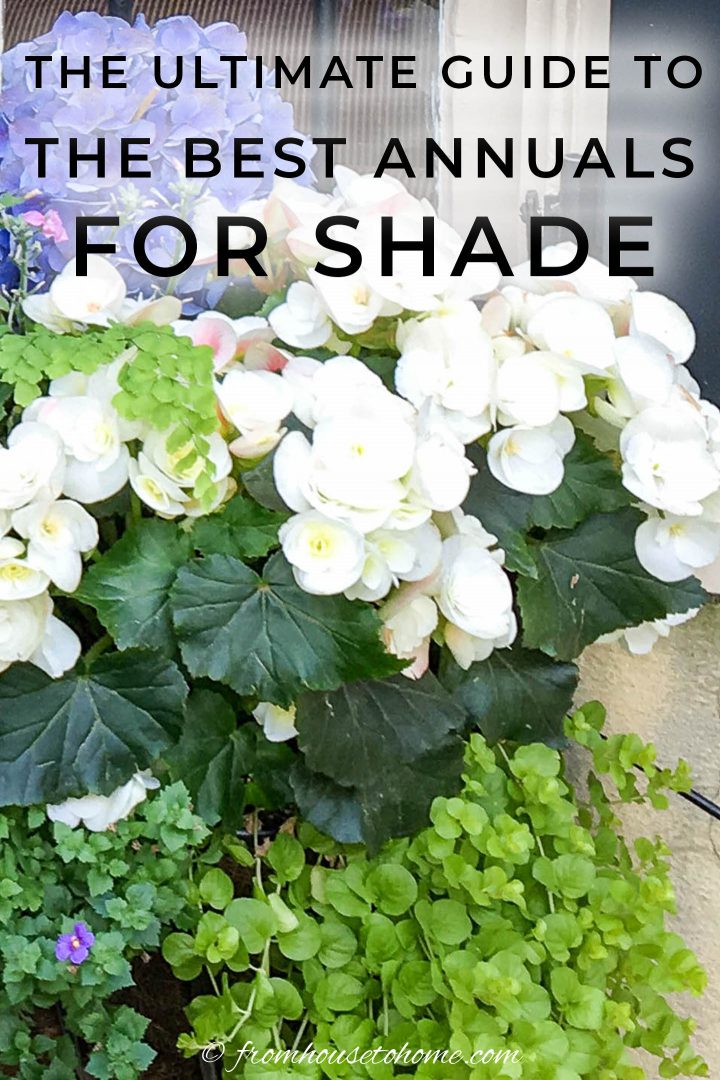
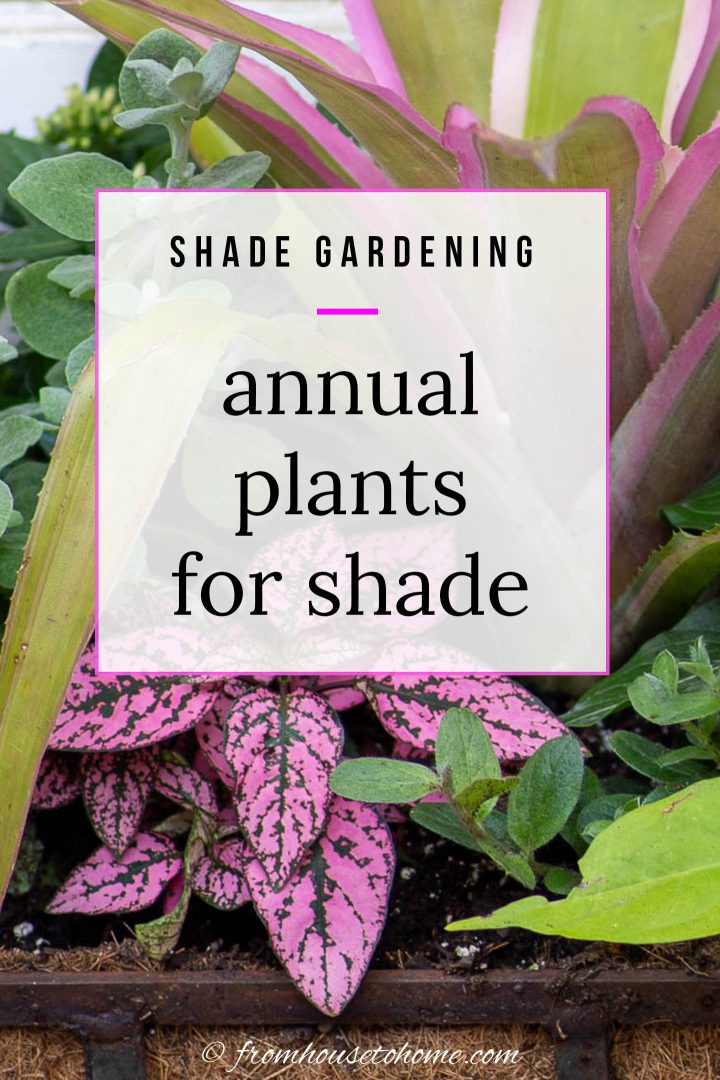
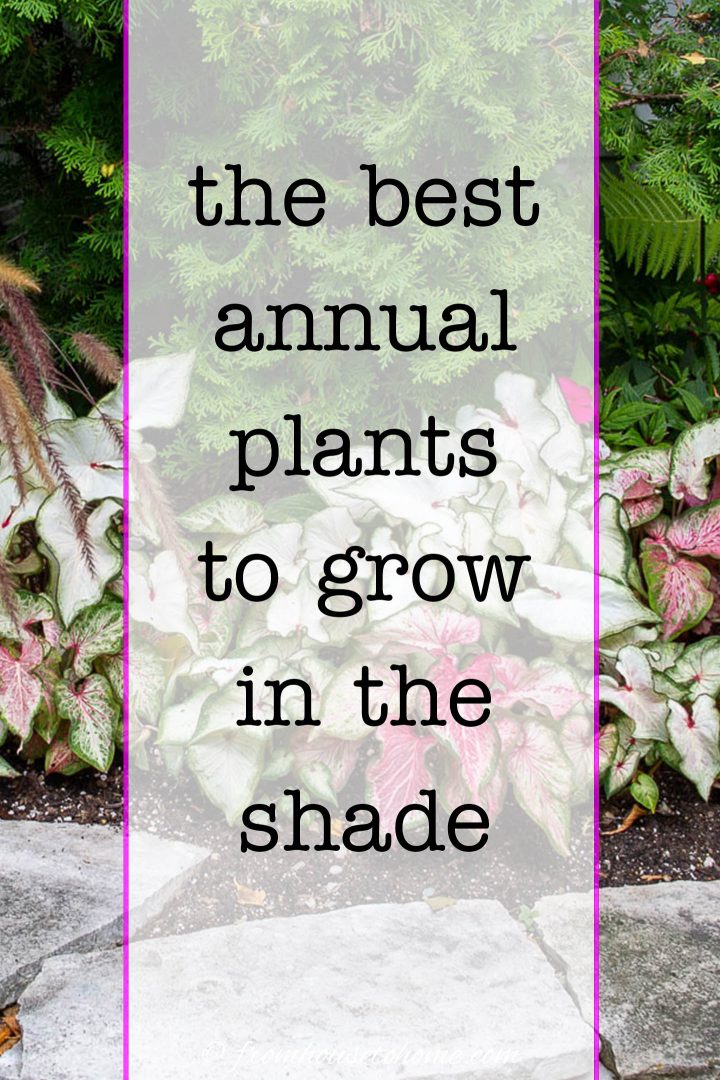
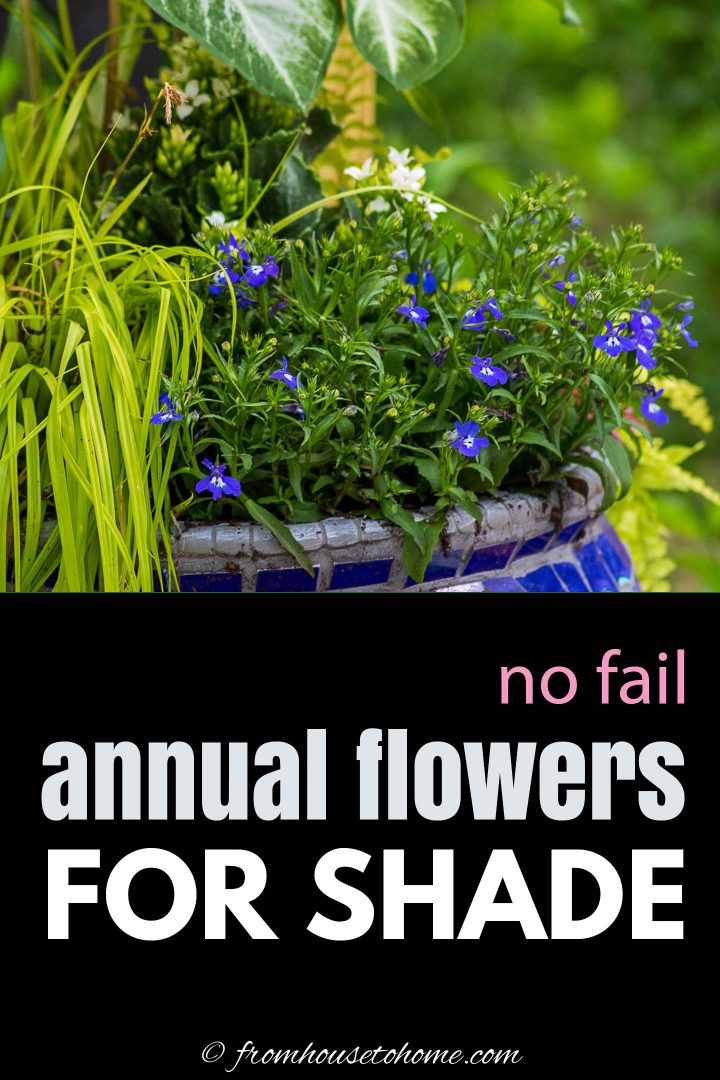
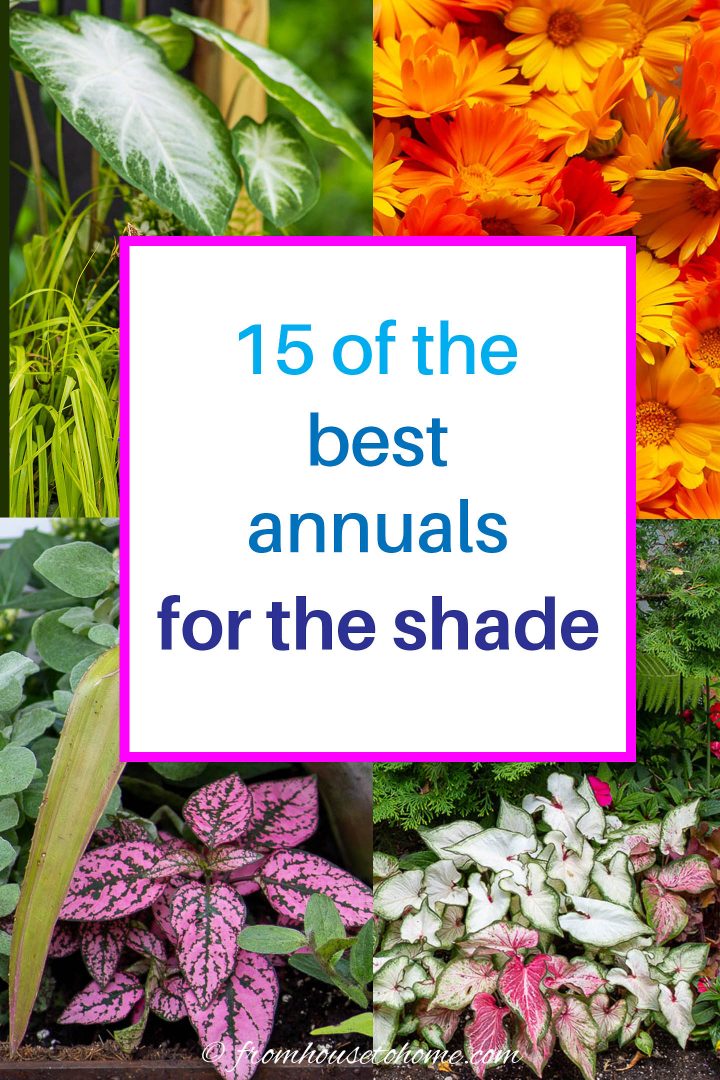
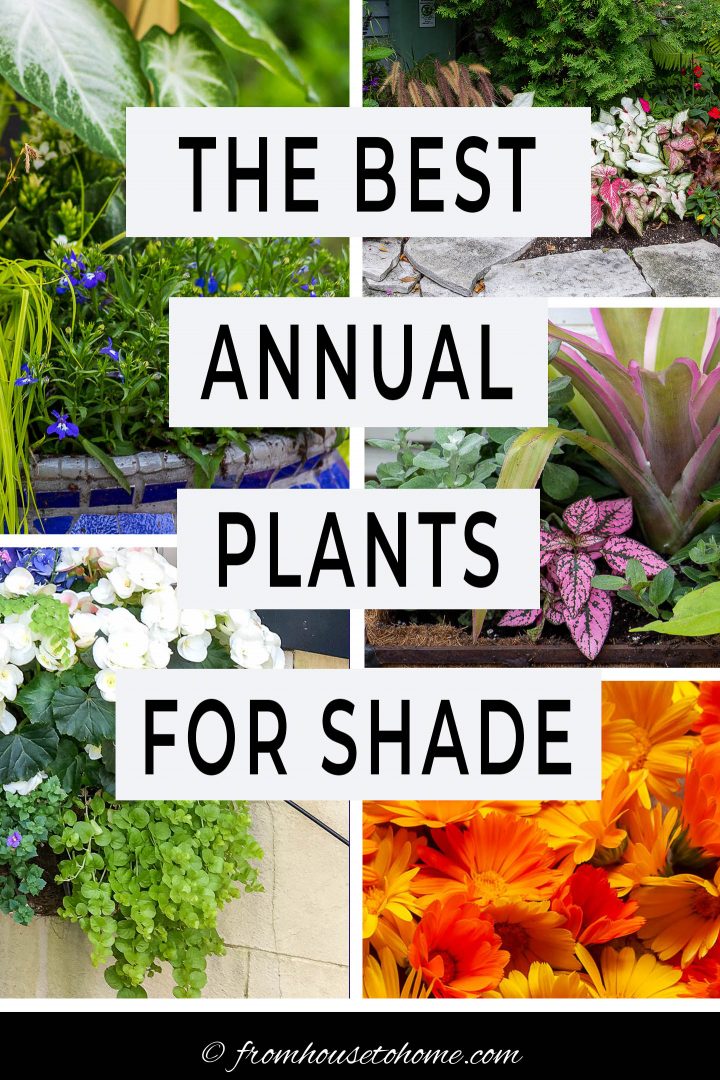
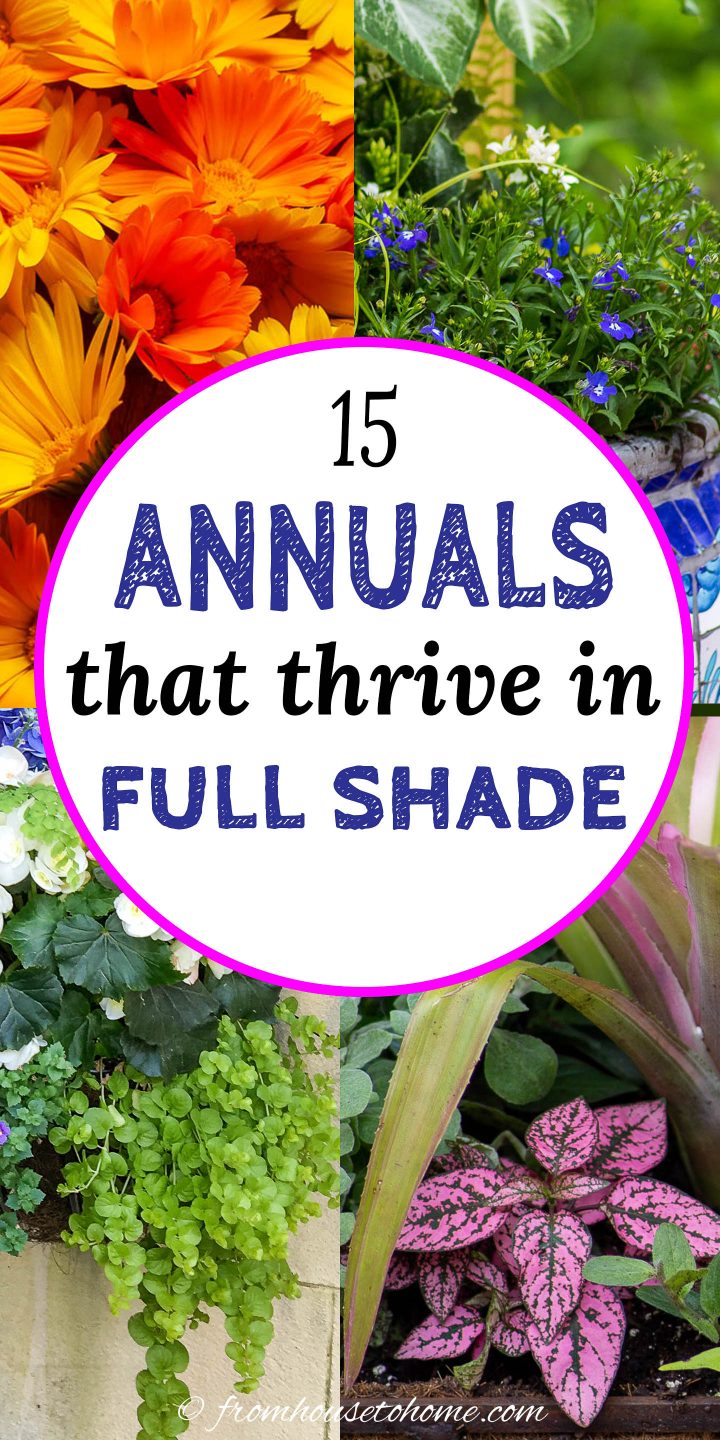
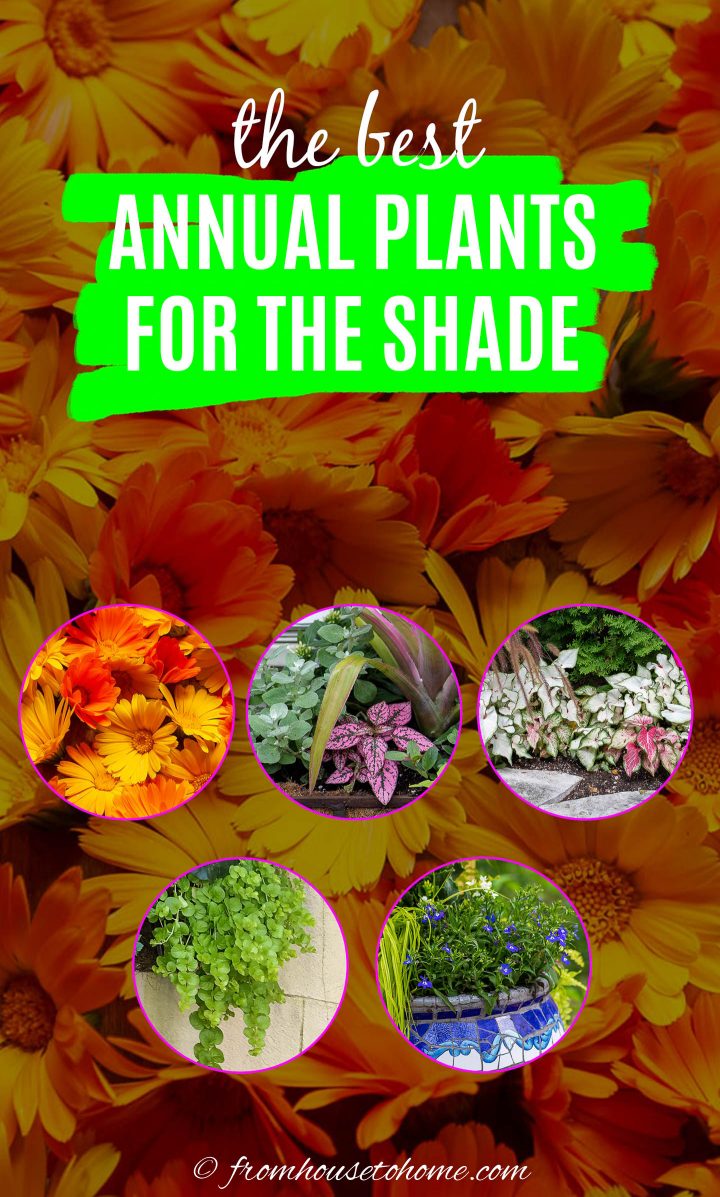



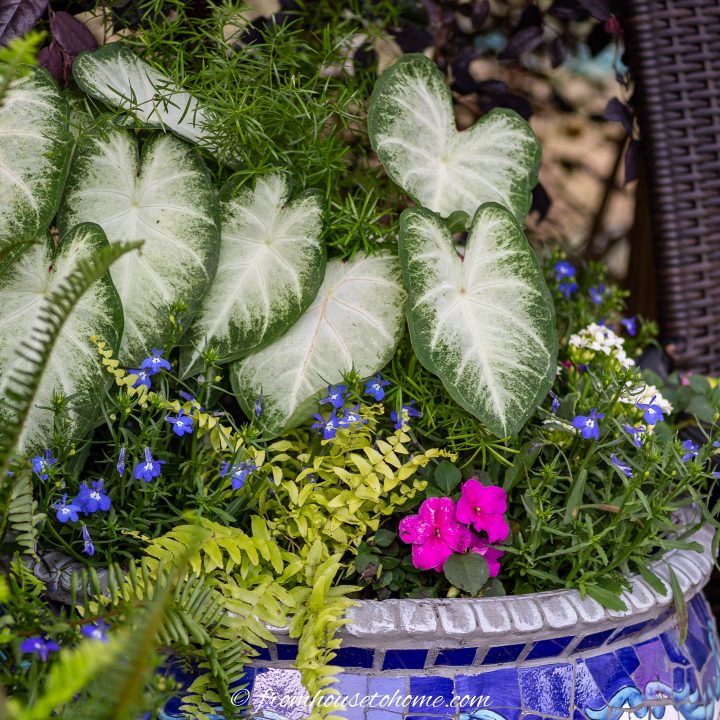











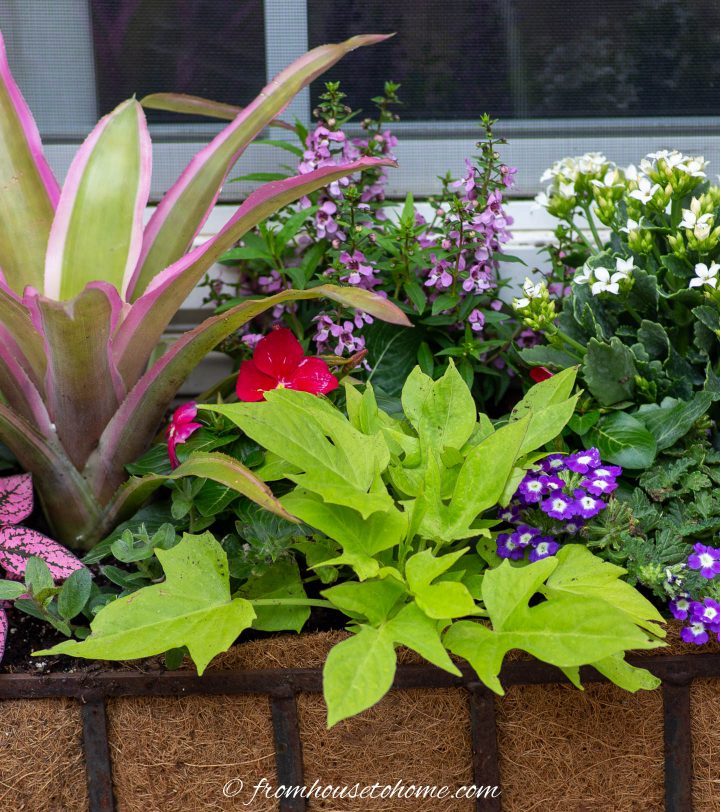




I have loved Rex Begonias for many years now. The first ones I found were at Superstore. Since that time I have not been able to find them again at any nursery or store. The show they put on for that whole summer was fantastic! They loved our bright shade back deck! The flower was even interesting, blue small flowers clustered all the way up a stem from the main stem.
Anyway, I long to find them every year since.
Your article on hanging baskets was great. The only thing I do differently is add osmocote, the slow release fertilizer as well as the water soluble at first and then every once in a while.
Hi Laura…I love the Rex Begonias, too. You can find quite a good selection of them on Etsy. Adding Osmocote when planting is a good idea…I just never remember to do it 🙂